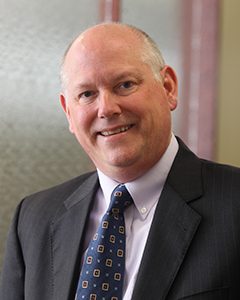Driving your Organization’s Success using Benefits as a Recruitment Tool

Organizations across the nation share similar goals and challenges, but ultimately they need to attract and retain valuable employees in order to provide a high level of customer service and to enhance the growth and profitability of the company.
Attracting and retaining talented employees is one of the biggest challenges facing organizations today. Your total rewards package is a key competitive resource for employee recruitment and retention and benefits are an important component of that package. In fact, after health insurance, the most important benefit program commonly cited by employees is a retirement plan.
Today, with unemployment trending lower, wage growth is picking up. This is good news for job candidates. Employers have positions to fill, which also means that workers now have leverage, confidence and options. For organizations competing for job candidates, a comprehensive benefits package may tip the scales for a candidate who’s considering multiple offers. The bottom line— benefits can be a game changer.
Competitive benefits not only help with recruitment but can also bolster retention. While a strong benefits package can become expensive, replacing an employee can be even more costly and time consuming if a company experiences regular turnover. Investing in a comprehensive benefits package can help mitigate the cost, time and effort involved in employee turnover and recruitment.
Consider whether your organization is taking full advantage of the basic benefits of sponsoring a retirement plan or if modifying your plan’s design could make it more valuable to the organization. Employers generally sponsor retirement plans to help them recruit and retain qualified employees and for the tax advantages available to plan sponsors. Here are some business goals your retirement plan might help you accomplish.
Cut Training Costs
Use your 401(k) plan as a retention tool. One idea: Add a profit sharing feature to your plan. Using a three-year cliff vesting schedule (100% vesting after three years) for the profit sharing contributions may help limit your training costs by lowering employee turnover and, thus, lessening the need for training.
Increase Productivity
A management change often causes productivity to drop — sometimes significantly — while employees familiarize themselves with the new manager and his or her expectations. Bringing in a new employee at any level can decrease productivity temporarily while that employee learns the job. Using key retirement plan features to retain managers and trained employees can help maintain productivity levels.
Including plan features that employees want, such as a variety of investment options to choose from and investment tools, education, and assistance to help them plan for retirement, can increase productivity. Employees who are happy with their jobs and appreciate their benefits generally are more committed to their employer and more productive in their work.
As a plan sponsor, you can foster commitment and productivity by regularly providing employees with plan information and financial education. Providing regular communication about benefits can sometimes increase commitment almost as much as the benefits themselves. Employees feel you, the employer, care about their future.
Improve Customer Satisfaction
Happy employees usually provide better service and leave customers feeling more satisfied. In addition to using your 401(k) plan to generally improve work force morale, you might want to consider taking specific steps to tie the plan to customer satisfaction. For example, you might tie profit sharing contributions or discretionary employer matching contributions to feedback you receive from periodic surveys of your customers. You might engage employees by conducting meetings to update them on customer satisfaction and expected contributions based on the results.
About the Author
